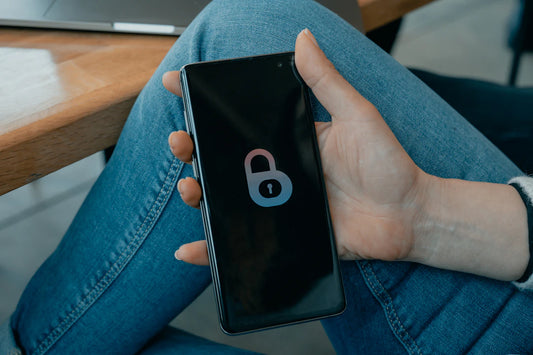Frequently Asked Questions
1. What are privacy phones?
2. What is the environmental impact of privacy phones?
3. How can consumers reduce the environmental footprint of their privacy phones?
4. What role do manufacturers play in the sustainability of privacy phones?
5. Why is community involvement important in promoting the sustainability of privacy phones?
In our digital age, privacy is no longer a luxury—it’s a necessity. As concerns regarding data breaches and personal information security intensify, privacy phones have emerged as the solution to safeguard our digital footprints. However, while these devices serve an essential purpose, it’s also important to consider their environmental impact. This article delves into the ecological footprint of privacy phones, examining their production, usage, and disposal phases, and how they can align with sustainable living.
The Rise of Privacy Phones
The surge in privacy phones has coincided with a growing awareness of the importance of data security. Among various brands, one notable example often highlighted is the OnePlus 3 PrivacyPortal. As users increasingly demand devices that prioritize their privacy, manufacturers are stepping up to meet these expectations. But as much as privacy phones contribute to protecting our personal data, they also bring forth questions regarding their environmental sustainability.
Life Cycle of a Phone: A Closer Look
Manufacturing and Raw Materials
The environmental effect of any consumer electronic begins with its manufacturing process. The production of privacy phones involves the extraction and processing of various raw materials, such as lithium for batteries, cobalt, and rare earth elements. Mining these materials can lead to significant ecological degradation, including habitat destruction, water pollution, and high carbon emissions.
Moreover, the production of a single smartphone is estimated to generate over 50 kilograms of CO2 emissions. When considering the entirety of privacy phones on the market, the aggregate impact becomes even more alarming. To mitigate these effects, brands must prioritize sustainable sourcing of materials and adopt eco-friendly manufacturing processes.
Usage and Energy Efficiency
Once privacy phones reach consumers, their environmental impact does not end. The energy consumption during their lifecycle must also be researched. While modern smartphones, including privacy-focused options like the OnePlus 3 PrivacyPortal, often come with advanced power-saving features, the daily use of these devices still contributes to electricity consumption. As consumers, we can reduce this impact by utilizing energy-efficient settings, reducing screen brightness, and opting for renewable energy sources whenever possible.
Additionally, being aware of how often we upgrade or replace our phones can also mitigate their environmental footprint. Frequent upgrades lead to increased electronic waste, known as e-waste, which poses a significant environmental issue due to its toxic components. The longer we keep our devices, the less consequential their impact on the environment.
The E-Waste Dilemma
Electronic waste is one of the fastest-growing waste streams globally. With privacy phones becoming increasingly popular, the issue is amplified as users replace older devices for newer models. E-waste contains hazardous substances like lead and mercury, which can leach into the environment, contaminating soil and water supplies.
To combat this issue, consumers and businesses must engage in responsible disposal practices. Participating in recycling programs, donating older devices, or reusing components can significantly reduce our collective footprint. Additionally, manufacturers have a role to play by implementing take-back programs that allow users to return their old devices for responsible recycling.
Finding Balance: Privacy vs. Sustainability
As privacy phones grow in popularity, it’s essential for consumers and brands alike to strike a balance between safeguarding personal information and protecting the environment. Here are some approaches to consider:
- Support Brands with Sustainable Practices: Choose manufacturers that prioritize eco-friendly practices, from sourcing materials to production methods.
- Promote Longevity: Invest in devices that are designed to last. Seek models that offer software updates for an extended duration and easy repairability.
- Limit Upgrades: Resist the urge to upgrade your phone every year. Extending the life of your current device can drastically decrease e-waste.
- Engage in E-Waste Recycling: Educate yourself about local e-waste recycling programs and utilize them responsibly.
Collaboration for a Sustainable Future
The endeavor for a sustainable future cannot rest solely on individual actions. Collaboration among consumers, businesses, and policymakers is crucial. As businesses increasingly recognize the importance of sustainability, we’re likely to see more initiatives geared towards reducing the environmental impact of privacy phones.
Emerging technologies also show promise in revolutionizing the industry. For instance, innovations in battery technology can reduce reliance on finite resources and create devices with longer lifespans. Keeping an eye on trends will allow consumers to make informed choices about their devices for both privacy and environmental implications.
Education and Awareness
It is also vital to increase awareness regarding the relationship between phone privacy and environmental responsibility. Awareness campaigns can guide users on sustainable practices and make them realize the better practices at hand. Social responsibility must accompany technological advancement, paving the way for a future that prioritizes both personal security and ecological integrity.
The Role of the Community
The conversation about the environmental impact of privacy phones extends beyond individual choices; the community can play a pivotal role. Grassroots movements can foster a culture of sustainability, where individuals advocate for policies that encourage eco-friendly practices and responsible consumption. By working together, communities can push businesses to prioritize sustainability, while consumers can educate one another about responsible device usage.
Embrace the Change: A Brighter Outlook
As the demand for privacy phones continues to escalate, it is imperative to address their environmental repercussions head-on. By opting for sustainable practices, engaging in responsible consumption, and supporting eco-conscious brands, we can champion both privacy rights and our planet's health. The intersection of technology, security, and sustainability signifies a new era where individuals can enjoy the benefits of privacy phones without compromising environmental integrity.
Ultimately, the narrative surrounding privacy phones needn’t be about trade-offs between privacy and sustainability. By embracing innovative solutions, practicing mindful usage, and creating a collective movement toward a greener future, we can achieve a harmonious balance that respects our right to privacy while honoring our responsibility to the earth.





